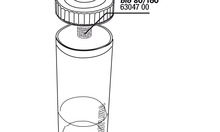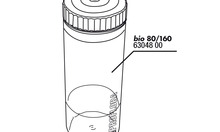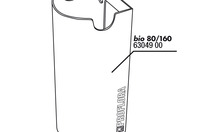Nutrition for aquarium plants
Healthy plants are important in every aquarium. Plants provide the aquarium with vital oxygen for the aquarium inhabitants, prevent algae growth and remove problem-causing substances.
Healthy plants = healthy fish
Healthy plants prevent algae growth, supply oxygen, remove pollutants, offer hiding places and reduce pathogens.
For the plants to flourish the following demands need to be met:
Light as an energy source for the photosynthesis of CO2, nutrients and trace elements to promote growth.
JBL plant fertilisers supply the plants with all their main nutrients and essential trace elements through the water. This way the plants can absorb all the required nutrients they need over the leaves and roots.
JBL ProFlora Bio80
Bio-CO2 fertiliser system with mini diffuser for healthy plant growth
PROFLORA Bio80
- Natural CO2 fertilisation for 40 days: healthy plant growth, less algae. Bio-CO₂ starter set for aquariums from 12-80 l
- Simple to install: ready for use within a few minutes
- Natural: CO2 production from biological fermentation process. High yield: steady production of CO2 for 40 days due to immediate and long-term buffer system, refillable. Improvement of plant growth of fine-structured plants. Professional CO2 diffuser
- No pressurised gas cylinder needed, special CO2 resistant hose
- Package contents: bio-CO2 fertiliser system, ProFlora bio 80, incl. reaction canister, refill set, CO2 diffuser, CO2 hose, check valve



